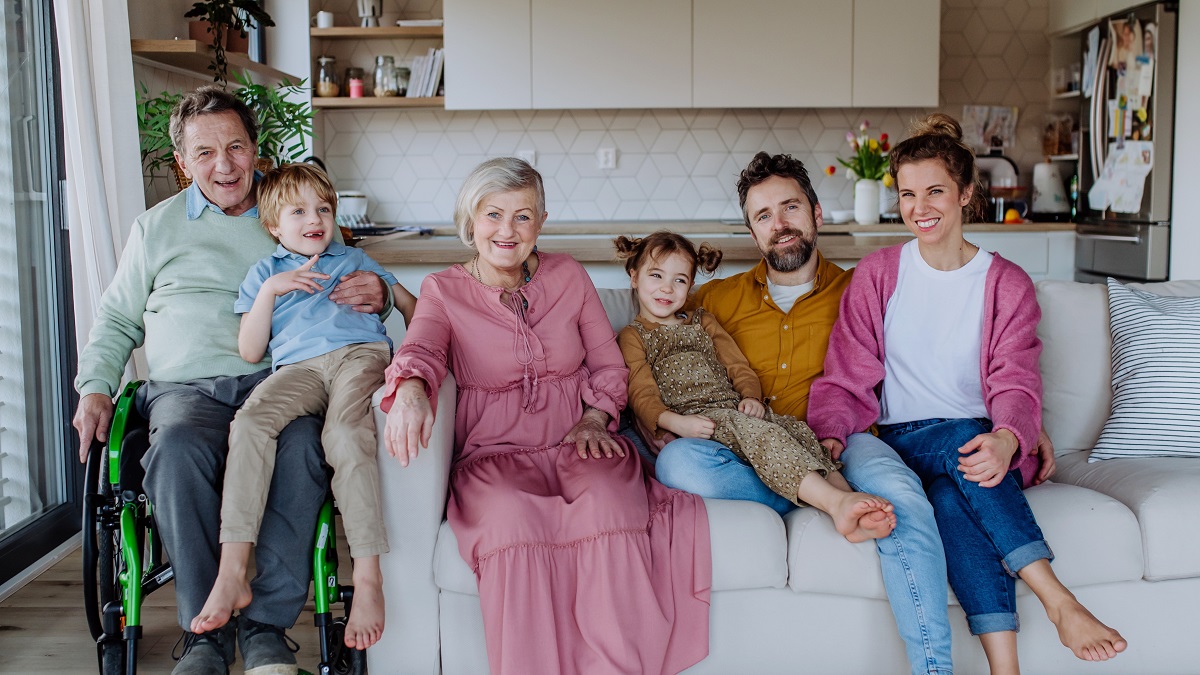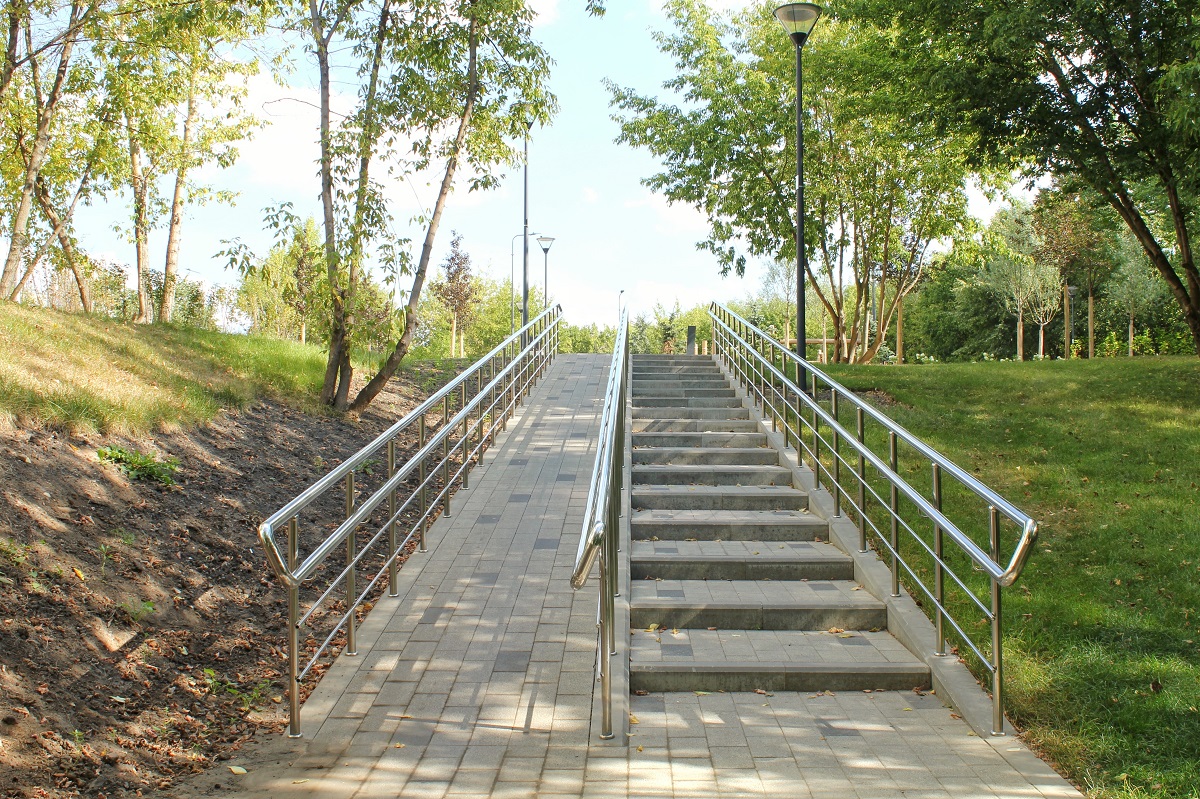by Peggy Edwards, Council on Aging of Ottawa
Accessibility is created when the needs of people with disabilities are specifically considered, and products, services and facilities are built or modified so that they can be used by people of all abilities.

In 2017, 22 per cent of Canadians reported living with a disability. This rose to 37.8 per cent among those 65 years and older, and 47.4 per cent for persons aged 75 years and older. About half of those 65 years and older with disabilities said they began having difficulties or activity limitations before age 65.
“Accessibility is important for all ages,” says Pat Thornton, an active member of the Council on Aging of Ottawa and a retired nurse who worked with people living with disabilities. “This includes children, adolescents, young adults, parents, older adults, people with injuries or illnesses and people living with disabilities.”
For older adults, accessibility is key to living and functioning independently in their own communities. It is critical to aging in place, which is what the great majority of people want. As the older population continues to grow rapidly over the next 20 years—It’s anticipated to reach 25 per cent of the population in Ottawa by 2035—the need for accessible public spaces, buildings, transportation and housing will continue to grow. When housing is not accessible, people are required to relocate as their functional abilities change over time due to aging, injury and/or debilitating diseases.
People living with disabilities require accessible built environments, including age-friendly, accessible housing. The best way to ensure this requirement is to adopt universal design.
Universal design (also called inclusive design or barrier-free design) is the design and structure of an environment that can be understood, accessed, used and convenient to the greatest extent possible by everyone regardless of their age or ability; therefore, it is inclusive for all. An accessible school, library, community centre or park means everyone can participate fully in their community.
“One familiar example of universal design is the sidewalk ramp or curb cut,” Pat explains. “A curb cut is essential for people using wheelchairs. It also benefits kids riding bikes, older people using walkers, parents pushing strollers and delivery people pulling heavy dollies. When something is universally designed, it can be used easily by everyone.”
Some Aging-in-Place, Accessibility Features Using the Principles of Universal Design
The incorporation of universal design creates housing that can be used by anyone, including those with vision, hearing, mobility or other disabilities. Some examples of features in housing that incorporate universal design include:
- No step and/or ramp entries to the house or apartment, patios, balconies and terraces,
- Doorways with at least a 34-inch-wide clear opening that can accommodate wheelchairs and walkers,
- Automatic doors (buttons and sensor types) in condo and apartment buildings
- Lever-style handles on doors and faucets,
- Access to at least one full bath on the main floor with reinforced walls at toilets and tubs for the future installation of grab bars,
- Cabinetry in the kitchen that allows a person to work in a seated position,
- Good lighting throughout the home including task lighting in critical locations (for instance, under kitchen cabinets),
- Walk-in showers that can accommodate a wheelchair and transfer shower benches,
- Front-loading laundry equipment.

Inclusive from the Start
“When architects and city planners plan around peoples’ diverse needs and abilities and use the principles of universal design, they can create environments that actually meet these individuals’ needs and abilities,” says Pat. “Cost is not a significant barrier to accessible design when it is incorporated from the start of any new build, whereas retrofitting and modifying a living space for accessibility can be very expensive.”
Appropriate, accessible, affordable housing is a human right, but there is an accessible housing crisis in Canada.
To ensure that our communities are increasingly inclusive and accessible, the Council on Aging of Ottawa has been providing information and education for older adults and for politicians who make decisions affecting these issues. Key actions that would make our communities and homes more accessible include:
- Amending Ontario’s Building Code to make universal design the mandatory standard for all units in new construction and major renovations of multi-unit residential buildings,
- Prioritizing universal design construction to be consistent with the Human Rights Code,
- Continuing and expanding programs that provide funding to older adults and persons with disabilities for essential repairs and home-accessibility modifications that support independent living,
- Requiring that every multi-unit residential building (both apartments and condominiums) have a generator capable of powering the elevators and emergency lighting in all corridors for the safety of all, including older adults and persons with disabilities,
- Encouraging builders to incorporate universal design so that all kinds of homes can be totally accessible in the future.
|
National AccessAbility Week (May 28 to June 3, 2023) is an opportunity to celebrate Canadians living with disabilities and raise awareness of the critical need for accessibility and inclusion for all in our communities. Learn more at www.canada.ca/en/employment-social-development/campaigns/national-accessability-week.html
The Ottawa Independent Living Resource Centre provides information, services and support programs for anyone over age 16 who self-identifies as having a disability. Contact: oilrc.com and 613-236-2558.
|
References and Further Learning
Accessible Housing Network: accessiblehousingnetwork.org
Canada Mortgage and Housing Corporation: Information on renovations, accessibility and aging in place: www.cmhc-schl.gc.ca
Centre for Excellence in Universal Design: universaldesign.ie/What-is-Universal-Design
COA. Housing Options in Ottawa: A Guide for Older Adults. coaottawa.ca/committees/housing/housing-options-in-ottawa/
Ontario Human Rights Foundation: https://www.ohrc.on.ca/en/search/site/universal%20design
Rick Hansen Foundation: www.rickhansen.com
Statistics Canada: Canadian Survey on Disability Reports, A demographic, employment and income profile of Canadians with disabilities aged 15 years and over, 2017
150.statcan.gc.ca/n1/pub/89-654-x/89-654-x2018002-eng.htm
Financial help with home renovations: Ontario Renovates Program: ottawa.ca/en/family-and-social-services/housing/ontario-renovates-program
|
The COA is a bilingual, inclusive, voluntary organization that works to advance the wellbeing of older adults in the Ottawa region and to make Ottawa an inclusive, age-friendly community. We support age-friendly housing that is both affordable and accessible. For information on membership, volunteer opportunities, events and learning programs, visit: www.coaottawa.ca or call 613-789-3577.
ADVANCING THE WELLBEING OF OLDER ADULTS
|






